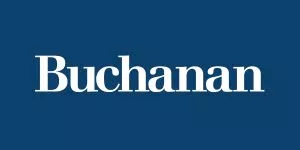With financial markets, businesses, and Main Street digesting higher country-specific reciprocal tariffs, on April 9, 2025, President Trump issued an executive order increasing reciprocal tariff rates for China to 125% and paused rate increases for other countries.1 The Tariff Modification Order also increases the duties for de minimis shipments from China (including Hong Kong and Macau).2
Background
As we previously reported, on April 2, 2025, President Trump declared a national emergency with regard to imbalanced and nonreciprocal trade between the United States and its trading partners. Consequently, the President issued an executive order that imposed sweeping "reciprocal" tariffs of at least 10 percent beginning on April 5, 2025.3 Beginning on April 9, the Reciprocal Tariffs Order established country-specific tariff rates for imports from countries with which the United States has a large and/or persistent trade deficit. The Reciprocal Tariffs Order was issued in tandem with an executive order further amending treatment of duty-free de minimis shipments from China (including Hong Kong and Macau) and requiring duties to be paid on all such shipments.
Changes to Reciprocal Tariff Rates
The Tariff Modification Order of April 9 responds to the divergent approaches taken by different trading partners. According to U.S. Secretary of the Treasury Scott Bessent, as many as 70 countries have reportedly sought to initiate negotiations with the Trump administration to implement bilateral trade arrangements.4 However, notably absent from that list is China, which responded to the tariff increase with its own tariff increase on U.S. exports to China.5 The United States and China have now each increased their tariff rates multiple times in an escalating trade war. Other trading partners, such as the European Union, have imposed retaliatory measures on certain sectors but then paused them for the time being.6 Reflecting the difference between the conciliatory and retaliatory approaches, President Trump has implemented a 90-day pause on the 'bespoke' rates.
Specifically, for "goods entered for consumption, or withdrawn from warehouse for consumption, on or after 12:01 a.m. eastern daylight time on April 10, 2025, enforcement of the second paragraph of section 3(a) of Executive Order 14257 is suspended until 12:01 a.m. eastern daylight time on July 9, 2025. Effective at 12:01 a.m. Eastern Daylight Time on April 10, 2025, and until 12:01 a.m. Eastern Daylight Time on July 9, 2025, all articles imported into the customs territory of the United States from the trading partners enumerated in Annex I to Executive Order 14257 shall be, consistent with law, subject to an additional ad valorem rate of duty of 10 percent, subject to all applicable exceptions set forth in Executive Order 14257."7 In effect, this means that with certain exceptions, imports from countries other than China will continue to be subject to the lower 10 percent tariff rate that entered into effect on April 5, 2025.8 This offers a 90-day reprieve from the higher tariff rates, presumably to incentivize trade negotiations while isolating China. Reportedly, President Trump has also not ruled out extending the 90-day period.9
However, beginning on April 10, the reciprocal tariff rate on imports China is set to a rate of 125 percent.10 Notably, these tariffs are additive to the 20 percent tariffs that were imposed on Chinese imports to address synthetic opioids. Accordingly, covered imports are now subject to a rate of 145%.11
Changes to Duty-Free De Minimis Tariffs
The Tariff Modification Order also amends treatment of duty-free de minimis shipments from China (including Hong Kong and Macau) by increasing duties to be paid on all such shipments.12 Section 4 of the Tariff Modification Order raises the tariff rate on such merchandise entered on or after May 2 will be subject to either a duty of 120 percent or a fee of $75-$100 per postal item containing goods ($150-$200 for each such postal item entered on or after June 1, 2025).
Conclusion
The reciprocal tariffs continue to act as a floor for the tariff rate that applies to many imports. Further, the Tariff Modification Order acts on the retaliatory actions by China by increasing reciprocal tariff rates. This may serve to incentivize trading partners to negotiate an accommodating approach to trade with the United States. However, the rapid tempo of changes and modifications requires enhanced vigilance.
Footnotes
1. See Modifying Reciprocal Tariff Rates to Reflect Trading Partner Retaliation and Alignment (April 9, 2025) (Tariff Modification Order).
2. See Further Amendment to Duties Addressing the Synthetic Opioid Supply Chain in the People's Republic of China as Applied to Low-Value Imports, 90 Fed. Reg. 14,899 (April 7, 2025) (De Minimis Order).
3. See Regulating Imports With a Reciprocal Tariff To Rectify Trade Practices That Contribute to Large and Persistent Annual United States Goods Deficits, 90 Fed. Reg. 15,401 (April 7, 2025) (Reciprocal Tariffs Order).
4. Alena Botros, Treasury Secretary Scott Bessent says negotiations over tariffs are happening, and about 70 countries have called the White House since 'Liberation Day' to talk trade, Fortune (April 8, 2025), available at https://fortune.com/2025/04/08/treasury-secretary-scott-bessent-tariff-negotiations-happening/.
5. Didi Tan and Zeke Miller, The United States and China are Locked in a faceoff over tariffs. No one wants to blink first, AP News (April 10, 2025), available at https://apnews.com/article/china-united-states-tariffs-trump-trade-3a1cb2941aa7387f25befe86fbe1f1c0.
6. Jeff Mason, Philip Blenkinsop and Joe Cash, US stocks sag amid escalating trade war with China, Reuters (April 10, 2025), available at https://www.reuters.com/world/trump-u-turns-tariffs-turns-trade-war-heat-china-2025-04-10/.
7. See Tariff Modification Order at Sec. 2.
8. Id.
9. Dan Mangan, Kevin Breuninger, Christina Wilkie, Megan Cassella, Jessee Pound and Ruxandra Iordache, Trump doesn't rule out extending 90-day tariff pause (April 10, 2025), available at https://www.cnbc.com/2025/04/10/china-trump-tariffs-live-updates.html.
10. Id. at Sec. 3.
11. See Amendment to Duties Addressing the Synthetic Opioid Supply Chain in the People's Republic of China, 90 Fed. Reg. 9,277 (February 5, 2025).
12. See Further Amendment to Duties Addressing the Synthetic Opioid Supply Chain in the People's Republic of China as Applied to Low-Value Imports (April 2, 2025) (De Minimis Order).
The content of this article is intended to provide a general guide to the subject matter. Specialist advice should be sought about your specific circumstances.


